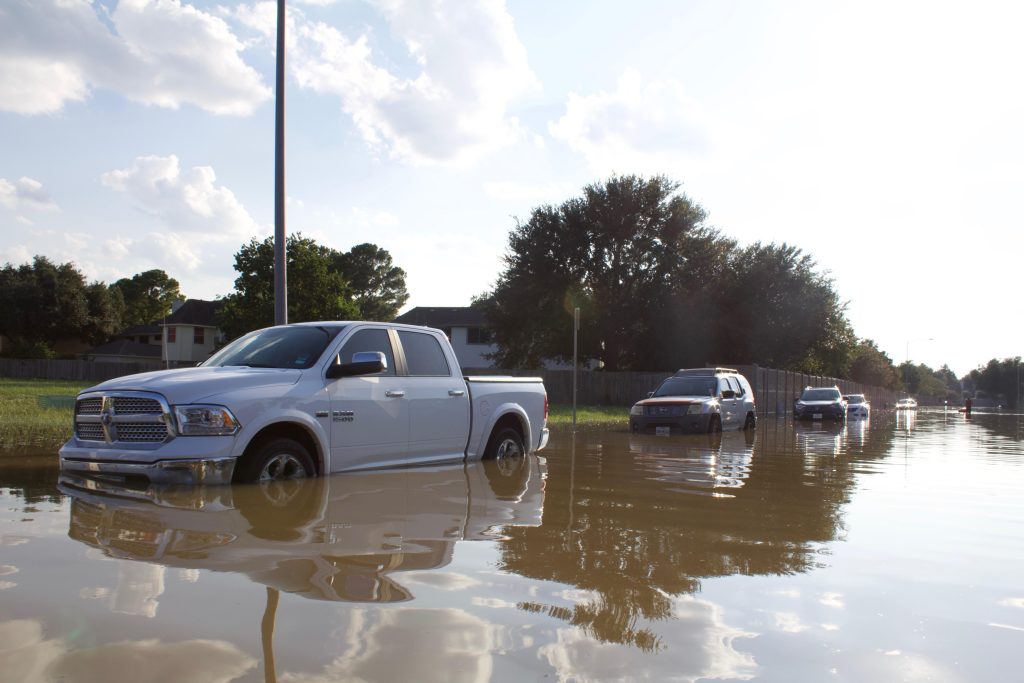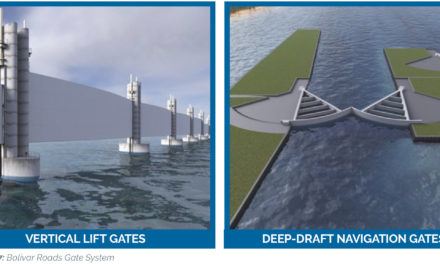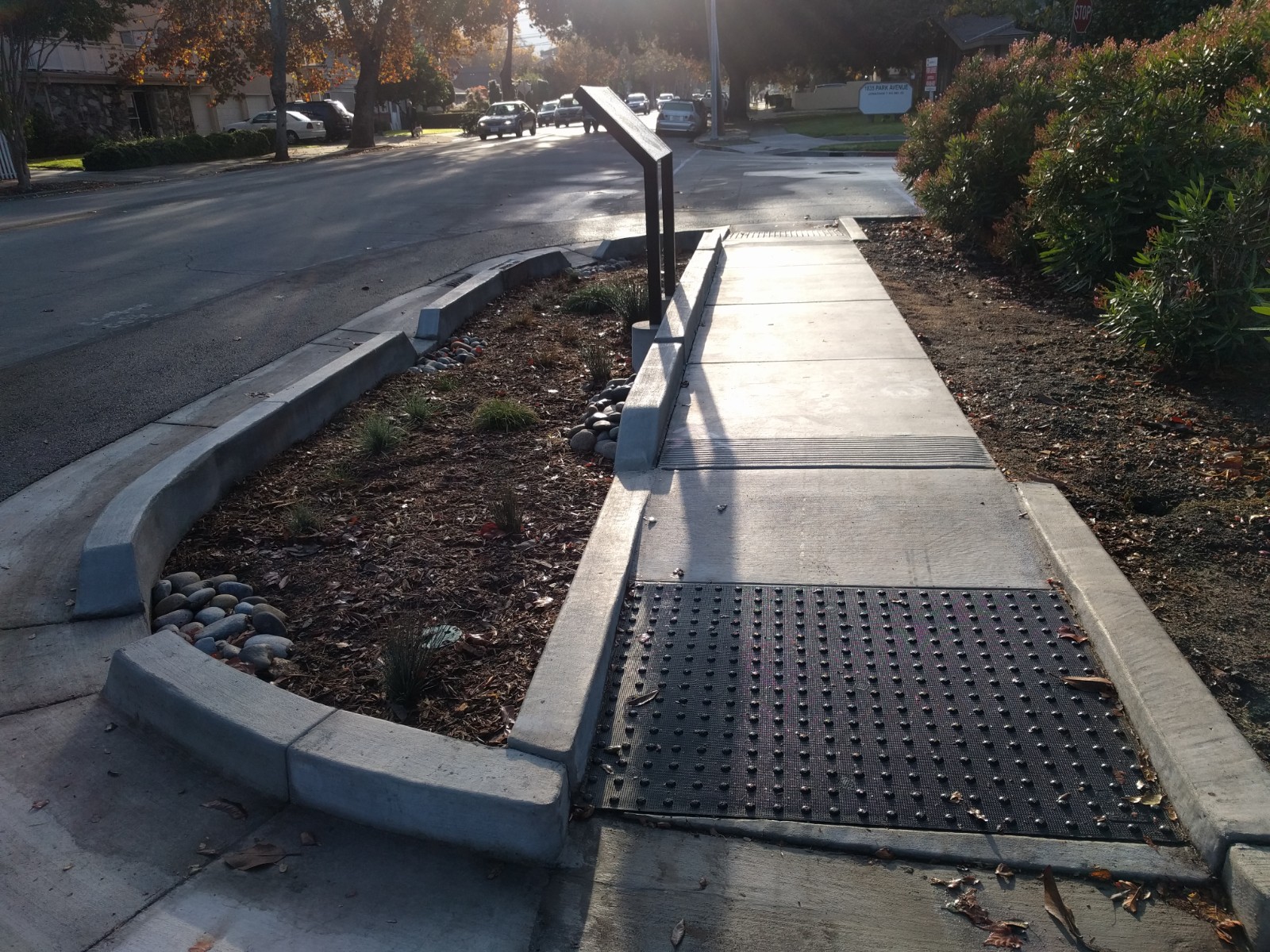The Harris County Flood Control District (HCFCD) is considering a massive, underground tunnel project aimed at mitigating chronic flooding that has afflicted the region for centuries. HCFCD leads stormwater management throughout approximately 4,700 km2 (1,800 mi2) of land in the greater Houston area. Planning efforts behind the project — which would carry a price tag of about USD $30 billion — began shortly after Hurricane Harvey flooded more than 100,000 properties in the HCFCD service area in 2017. The agency recently concluded the second phase of a long-term investigation into whether a series of eight large-diameter stormwater tunnels located as deep as 30 m (100 ft) underground would represent a feasible and cost-effective option given the region’s low elevation and soft, clay-rich soils.
During a June 16 virtual meeting, HCFCD Assistant Director of Operations Scott Elmer described that although building the proposed tunnels would be both costly and complex compared to aboveground flood-control measures, the project’s benefits would affect the entire HCFCD service area. Additionally, as available space for aboveground infrastructure dwindles, seeking options underground could create new flexibility for stormwater management in the region’s most developed and flood-prone areas. The current proposal calls for 210 km (130 mi) of underground tunnels measuring up to 14 m (45 ft) in diameter. These tunnels could collect and convey as much as 24.6 billion L (6.5 billion gal) of water at a time.
“Channels and basins are the tools that we have historically used to reduce flooding for the past 80 years,” Elmer said during the meeting. “By adding tunnels to the existing stormwater management network, we increase the volume of water that can be moved out of areas that have a history of flooding.”
Seeking Underground Options
Houston is particularly prone to flooding not only because it experiences frequent tropical storms and hurricanes, but also because of its topography. The city sits at the confluence of several streams and bayous that often overflow during heavy storms. Additionally, much of the soil beneath the city contains high amounts of clay. Clay laden soils struggle to soak up floodwaters as readily as other types of soil. For these reasons, coupled with more urbanization and less impervious space, HCFCD estimates that at least one major flood occurs within its service area every two years.
“Flooding is a fact of life in Harris County,” Elmer said during the June meeting. He added that while Hurricane Harvey was an exceptional example, loss of property and risk of injury are common even during minor events. “It does not take a catastrophic event to create flooding that results in catastrophic losses.”

Elevation presents another challenge. According to HCFCD’s feasibility study for the tunnel project, Harris County’s highest point is only about 74 m (244 ft) above sea level and the region experiences little variation in terrain height. As stormwater conveyance tunnels function via gravity and depend on enough slope to convey water to designated discharge points, it was unclear whether enough space existed underground for a tunnel system of the size HCFCD is considering to function effectively.
“We began with a very simple question: Can large-diameter tunnels be built underground given the soft soils of Harris County? The answer was ‘yes,’” Elmer said. “But we also found that in some watersheds, a tunnel may not move enough water using gravity to make a difference over traditional flood control methods.”
The feasibility study, supported by a grant from the U.S. Department of Housing and Urban Development, identified 11 watersheds out of the 23 that encompass HCFCD’s service area where building underground tunnels would likely be more cost-effective than aboveground alternatives. These aboveground options include widening existing stormwater conveyance channels and building new detention and retention basins. They could theoretically manage as much stormwater as the proposed tunnel system, but would have a much larger physical footprint and involve significant community disruption, Elmer said.
For example, for one of the assessments an underground tunnel would require about 11 ha (27 ac) while a traditional, aboveground infrastructure with the same capacity would require nearly 1,000 ha (2,500 ac), according to Elmer.
As available space in the target watersheds is minimal, conventional options would require the city to purchase and demolish dozens of privately owned properties, a costly and disruptive process that could take decades to complete before construction could proceed.
Not Yet a ‘Must-Do’
Considerable planning work remains before HCFCD will make its final determination about whether to pursue the tunnel project, Elmer said.
The next phase of the district’s investigation, scheduled to begin in early 2023, will identify specific points where a tunnel system could connect with existing aboveground flood-control structures, including pinpointing the locations of intakes and outfalls. HCFCD staff also will undertake public outreach efforts to learn more about the project’s potential disruptions to the communities it will target. It also will further refine the tunnel system’s design and more clearly quantify its benefits.
Crucially, HCFCD also will explore funding and financing options for the project. Elmer stressed that for the tunnel system proposal to move forward, it must earn substantial financial support from state and federal sources to minimize burdens on local taxpayers.
“We aren’t ready to declare a tunnel system a ‘must-do’ option in Harris County quite yet,” Elmer said during the meeting. “We have some additional work to do.”
If HCFCD ultimately decides to pursue the tunnel project, Elmer said, construction is expected to take at least 10 to 15 years. According to its current design specifications, the system would mitigate as many as 120,000 instances of flooding expected to affect the HCFCD service area within the next 100 years.
Learn more about the stormwater tunnel proposal at the HCFCD website.
Top image courtesy of PxHere/Creative Commons

ABOUT THE AUTHOR
Justin Jacques is editor of Stormwater Report and a staff member of the Water Environment Federation (WEF). In addition to writing for WEF’s online publications, he also contributes to Water Environment & Technology magazine. Contact him at jjacques@wef.org.







